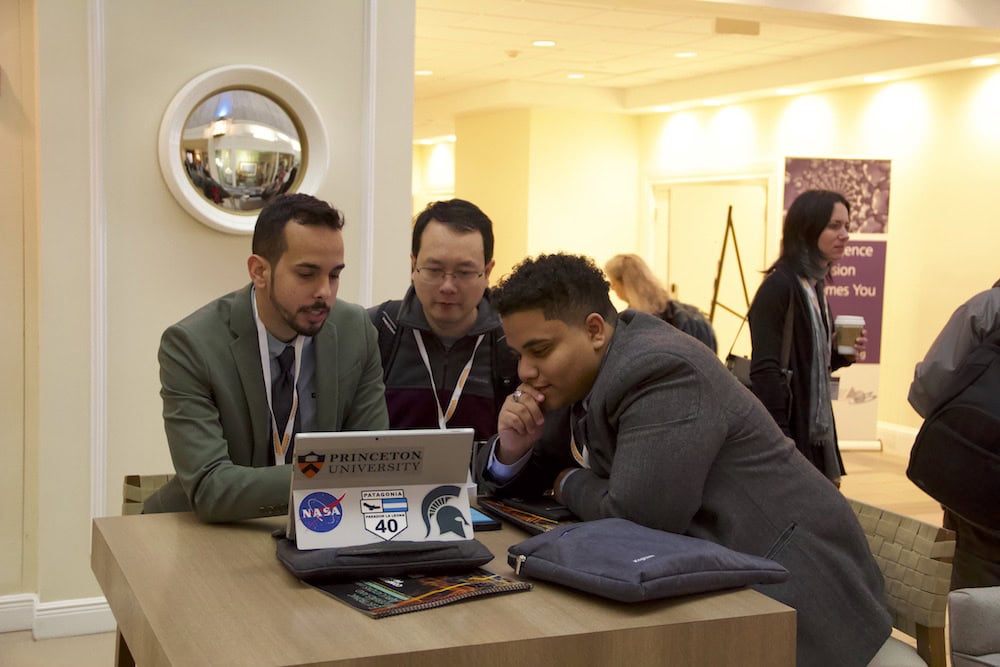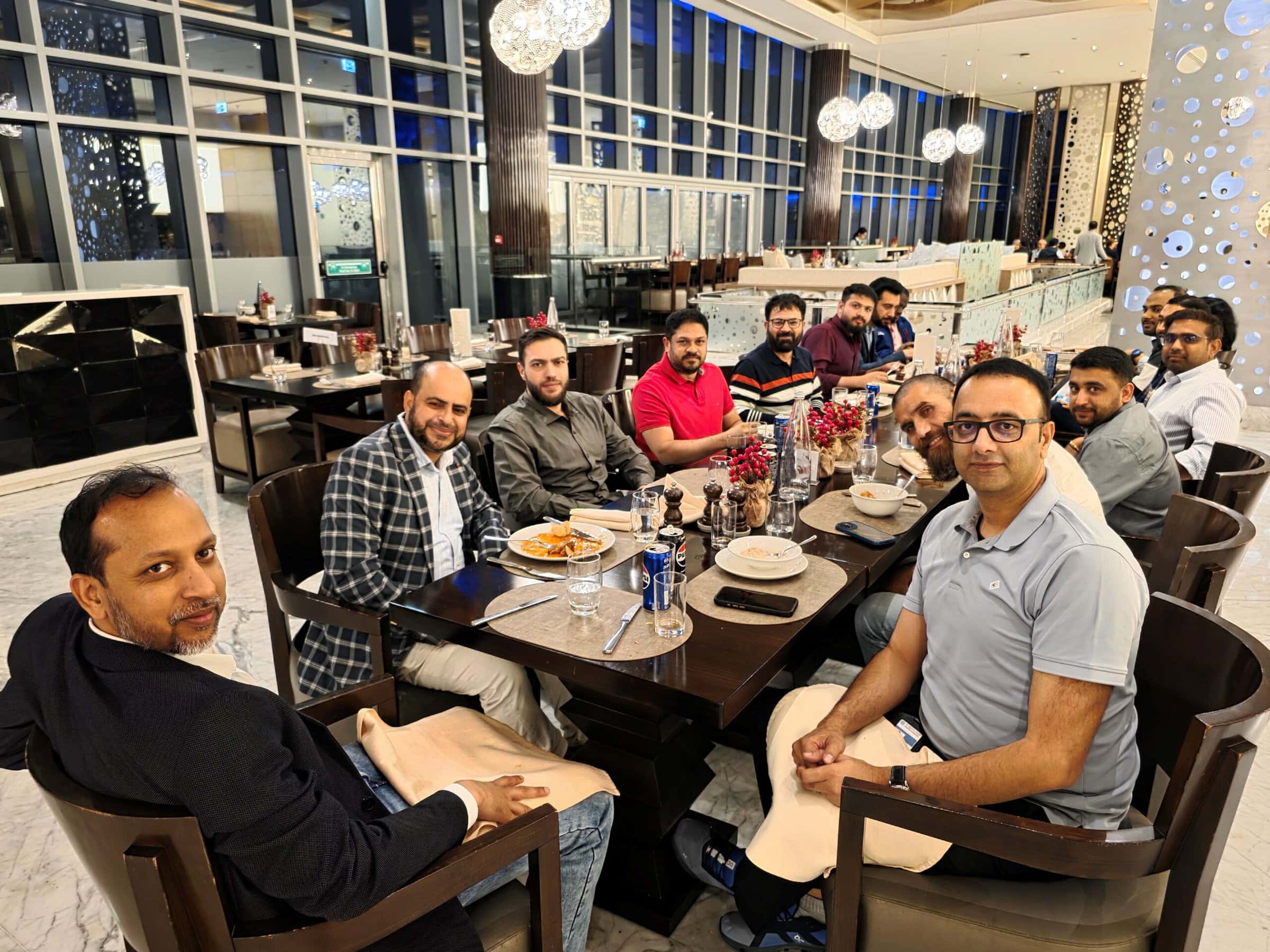
[Image above] Basic Science Division and Electronics Division held their 11th annual Electronic Materials and Applications Conference last week in Orlando, Fla. Credit: ACerS
Last week, ACerS Electronics Division and Basic Science Division welcomed 325 participants, including 64 students, from 33 countries to the 11th annual Electronic Materials and Applications Conference in Orlando, Fla., from January 22–24.
EMA is an international conference focused on electroceramic materials and their applications in electronic, electromechanical, magnetic, dielectric, biological and optical components, devices, and systems. This year was a big one for the meeting, as 2020 marks a major anniversary for a particular electroceramic property—ferroelectricity.
100 years of ferroelectricity
This year marks the 100th anniversary of the discovery of ferroelectricity in 1920. These materials have become huge commercial successes and drive an estimated $7 billion in annual business worldwide, although much remains to understand about these materials.
Susan Trolier-McKinstry, professor at The Pennsylvania State University, presented a short history of the discovery and development of ferroelectric materials during lunch on the second day of the meeting.

Ferroelectricity was first reported by a graduate student studying Rochelle Salt structures in 1920, and later the effect was observed in barium titanate. However, the crystallography of ferroelectric materials remained a mystery until Helen Megaw, an Irish crystallographer working at Philips Lamps in London, determined its perovskite structure in the 1940s. With the structure unlocked, ceramic scientists worked to understand the science underlying its properties, processing, and applications.
L. Eric Cross and Robert Newnham (both late professors at Penn State) were leading ferroelectric researchers and also wrote a short history of ferroelectric ceramics. As scientific researchers, Cross and Newnham had the unusual experience of seeing their research evolve into a huge industry.
I asked Trolier-McKinstry whether they ever reflected on the impact of their contributions. Apparently, they retained a humility about their work, and neither was swept up by the outcomes of their research until Newnham met a gentleman at a cardiology conference whose life was saved by a medical ultrasound scan. Trolier-McKinstry said the experience brought a profoundly personal aspect to the research for Newnham.
By the way, the theme of this year’s January/February issue of the ACerS Bulletin is ferroelectricity. This issue showcases significant papers published in the Journal of the American Ceramic Society (and Bulletin) on ferroelectricity and details the impact of those contributions. It also points to current research directions and emerging opportunities for ceramic ferroelectric materials.
From heterostructures to defects—other properties of complex oxides
The conference included two plenary lectures, one each presented on Wednesday and Thursday.
Guus Rijnders from the University of Twente in The Netherlands opened the conference with a plenary talk on novel functionalities in atomically controlled oxide heterostructures synthesized by pulsed laser deposition.
Growing atomically smooth films of complex oxides requires understanding nucleation and growth mechanisms of superlattices and kinetics of the processes, which also allows for tuning of properties. Applications range from high temperature superconductors to high-power field effect transistors for automobiles, smart mirrors for lithography, and brain-inspired processing units.

Elizabeth Dickey from North Carolina State University spoke at Thursday’s plenary on “Defect disorder and dynamics in functional oxides.” She noted, “In our community, we try to harness disorder,” using the example of capacitors, “where you don’t want things to move around.”
However, real ceramics contain defects and disorder, which lead to useful properties such as electrical conductivity. Properties can be engineered by tuning defects and controlling disorder for advanced applications, such as resistive switches.
As an expert on defects and field effects on defects, Dickey wondered about the role of defects in flash sintering. Flash sintering involves ultrafast densification by applying a voltage along with heat. Her studies suggest that flash sintering thermally induces defects, and sintering occurs by means of a thermal effect rather than a field-induced effect. She stressed, however, that these ideas are preliminary and more research is needed to really understand the mechanisms at play during flash sintering.

In addition to these talks, EMA organizers scheduled plenty of networking opportunities, a poster session, student events and recognitions, and a conference dinner. The conference closed with its ever-popular Failure Symposium, where scientists come clean about the bumps in their road to success. This year, Brian Huey from the University of Connecticut and John Blendell from Purdue University shared the lessons learned from experiences that, at first glance, looked like failures.
View images from the event on ACerS Flickr page. And be sure to join us again for EMA 2021 in Orlando, Fla., January 20–22, 2021!
Author
Eileen De Guire
Spotlight Categories
- Meeting Highlights
Divisions
- Basic Science
- Electronics


